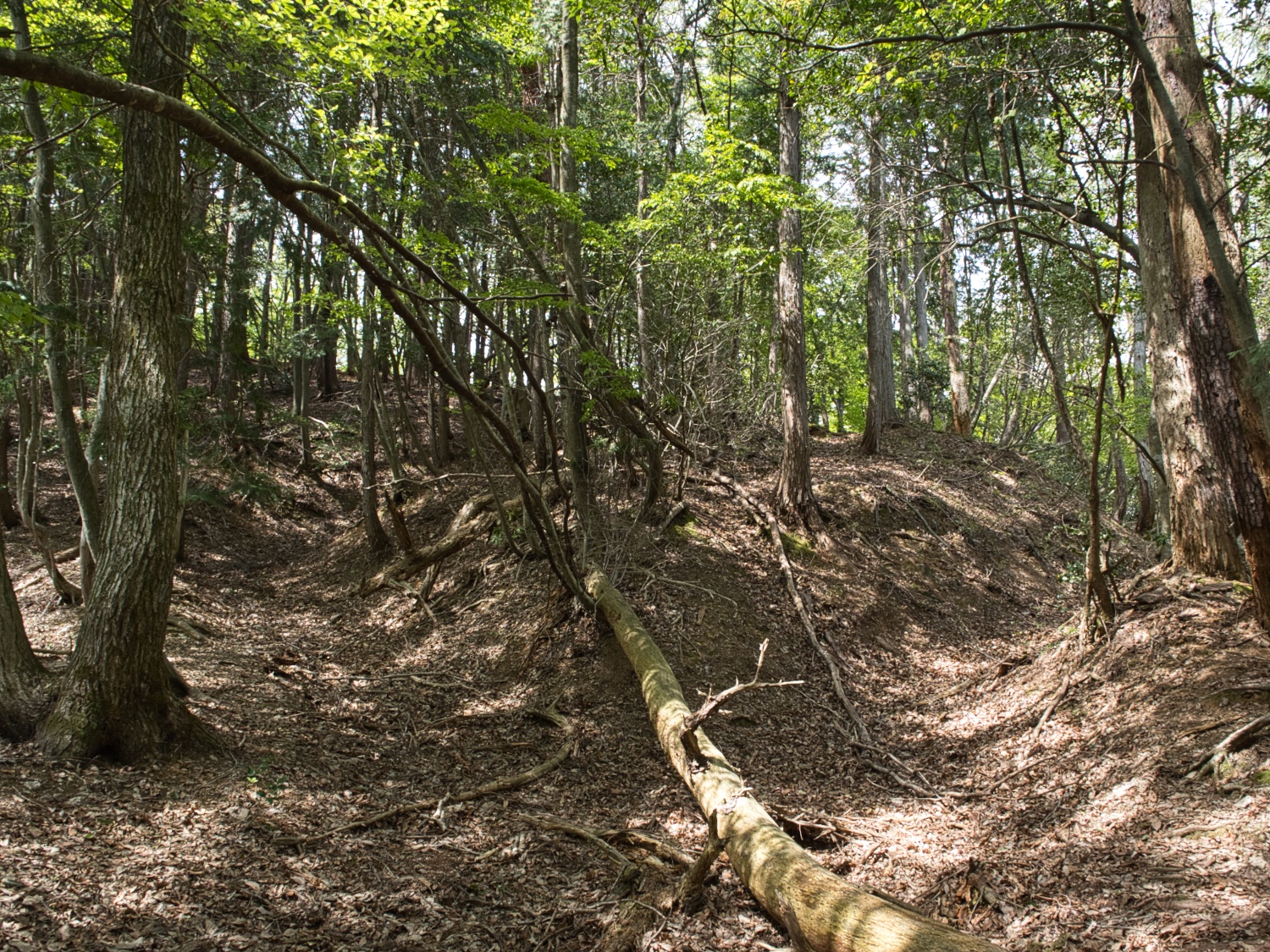Loading map...
{"format":"leaflet","minzoom":false,"maxzoom":false,"limit":500,"offset":0,"link":"all","sort":["order"],"order":[],"headers":"show","mainlabel":"","intro":"","outro":"","searchlabel":"... further results","default":"","import-annotation":false,"width":"auto","height":"350px","centre":false,"title":"","label":"","icon":"Darkred18.png","lines":[],"polygons":[],"circles":[],"rectangles":[],"copycoords":false,"static":false,"zoom":false,"defzoom":14,"layers":["Esri.WorldTopoMap"],"image layers":[],"overlays":[],"resizable":false,"fullscreen":false,"scrollwheelzoom":true,"cluster":false,"clustermaxzoom":20,"clusterzoomonclick":true,"clustermaxradius":80,"clusterspiderfy":true,"geojson":"","clicktarget":"","showtitle":false,"hidenamespace":true,"template":"InfoWindowProfile","userparam":"","activeicon":"","pagelabel":false,"ajaxcoordproperty":"","ajaxquery":"","locations":[{"text":"\u003Cdiv style=\"width:150px\"\u003E\n\u003Cp\u003E\u003Ca href=\"/view/File:Nakataniyama30.jpg\" class=\"image\"\u003E\u003Cimg alt=\"Nakataniyama30.jpg\" src=\"../images/thumb/e/e1/Nakataniyama30.jpg/125px-Nakataniyama30.jpg\" decoding=\"async\" width=\"125\" height=\"94\" srcset=\"../images/thumb/e/e1/Nakataniyama30.jpg/188px-Nakataniyama30.jpg 1.5x, ../images/thumb/e/e1/Nakataniyama30.jpg/250px-Nakataniyama30.jpg 2x\" data-file-width=\"1500\" data-file-height=\"1125\" /\u003E\u003C/a\u003E\u003C!--MW-PAGEIMAGES-CANDIDATE-0--\u003E\n\u003C/p\u003E\n\u003C/div\u003E","title":"","link":"","lat":35.56585,"lon":136.18657,"icon":"../images/0/06/Darkred18.png"},{"text":"\u003Cdiv style=\"width:150px\"\u003E\n\u003Cp\u003E\u003Ca href=\"/view/File:Nakataniyama1.jpg\" class=\"image\"\u003E\u003Cimg alt=\"Nakataniyama1.jpg\" src=\"../images/thumb/f/fd/Nakataniyama1.jpg/125px-Nakataniyama1.jpg\" decoding=\"async\" width=\"125\" height=\"94\" srcset=\"../images/thumb/f/fd/Nakataniyama1.jpg/188px-Nakataniyama1.jpg 1.5x, ../images/thumb/f/fd/Nakataniyama1.jpg/250px-Nakataniyama1.jpg 2x\" data-file-width=\"1500\" data-file-height=\"1124\" /\u003E\u003C/a\u003E\u003C!--MW-PAGEIMAGES-CANDIDATE-1--\u003E\n\u003C/p\u003E\n\u003C/div\u003E","title":"","link":"","lat":35.566077,"lon":136.186632,"icon":"../images/0/06/Darkred18.png"},{"text":"\u003Cdiv style=\"width:150px\"\u003E\n\u003Cp\u003E\u003Ca href=\"/view/File:Nakataniyama2.jpg\" class=\"image\"\u003E\u003Cimg alt=\"Nakataniyama2.jpg\" src=\"../images/thumb/8/8e/Nakataniyama2.jpg/125px-Nakataniyama2.jpg\" decoding=\"async\" width=\"125\" height=\"94\" srcset=\"../images/thumb/8/8e/Nakataniyama2.jpg/188px-Nakataniyama2.jpg 1.5x, ../images/thumb/8/8e/Nakataniyama2.jpg/250px-Nakataniyama2.jpg 2x\" data-file-width=\"1500\" data-file-height=\"1125\" /\u003E\u003C/a\u003E\u003C!--MW-PAGEIMAGES-CANDIDATE-2--\u003E\n\u003C/p\u003E\n\u003C/div\u003E","title":"","link":"","lat":35.566032,"lon":136.186537,"icon":"../images/0/06/Darkred18.png"},{"text":"\u003Cdiv style=\"width:150px\"\u003E\n\u003Cp\u003E\u003Ca href=\"/view/File:Nakataniyama4.jpg\" class=\"image\"\u003E\u003Cimg alt=\"Nakataniyama4.jpg\" src=\"../images/thumb/4/46/Nakataniyama4.jpg/125px-Nakataniyama4.jpg\" decoding=\"async\" width=\"125\" height=\"94\" srcset=\"../images/thumb/4/46/Nakataniyama4.jpg/188px-Nakataniyama4.jpg 1.5x, ../images/thumb/4/46/Nakataniyama4.jpg/250px-Nakataniyama4.jpg 2x\" data-file-width=\"1500\" data-file-height=\"1125\" /\u003E\u003C/a\u003E\u003C!--MW-PAGEIMAGES-CANDIDATE-3--\u003E\n\u003C/p\u003E\n\u003C/div\u003E","title":"","link":"","lat":35.565997,"lon":136.186508,"icon":"../images/0/06/Darkred18.png"},{"text":"\u003Cdiv style=\"width:150px\"\u003E\n\u003Cp\u003E\u003Ca href=\"/view/File:Nakataniyama5.jpg\" class=\"image\"\u003E\u003Cimg alt=\"Nakataniyama5.jpg\" src=\"../images/thumb/e/e2/Nakataniyama5.jpg/125px-Nakataniyama5.jpg\" decoding=\"async\" width=\"125\" height=\"94\" srcset=\"../images/thumb/e/e2/Nakataniyama5.jpg/188px-Nakataniyama5.jpg 1.5x, ../images/thumb/e/e2/Nakataniyama5.jpg/250px-Nakataniyama5.jpg 2x\" data-file-width=\"1500\" data-file-height=\"1125\" /\u003E\u003C/a\u003E\u003C!--MW-PAGEIMAGES-CANDIDATE-4--\u003E\n\u003C/p\u003E\n\u003C/div\u003E","title":"","link":"","lat":35.565993,"lon":136.186507,"icon":"../images/0/06/Darkred18.png"},{"text":"\u003Cdiv style=\"width:150px\"\u003E\n\u003Cp\u003E\u003Ca href=\"/view/File:Nakataniyama6.jpg\" class=\"image\"\u003E\u003Cimg alt=\"Nakataniyama6.jpg\" src=\"../images/thumb/0/0c/Nakataniyama6.jpg/125px-Nakataniyama6.jpg\" decoding=\"async\" width=\"125\" height=\"94\" srcset=\"../images/thumb/0/0c/Nakataniyama6.jpg/188px-Nakataniyama6.jpg 1.5x, ../images/thumb/0/0c/Nakataniyama6.jpg/250px-Nakataniyama6.jpg 2x\" data-file-width=\"1500\" data-file-height=\"1125\" /\u003E\u003C/a\u003E\u003C!--MW-PAGEIMAGES-CANDIDATE-5--\u003E\n\u003C/p\u003E\n\u003C/div\u003E","title":"","link":"","lat":35.565982,"lon":136.186507,"icon":"../images/0/06/Darkred18.png"},{"text":"\u003Cdiv style=\"width:150px\"\u003E\n\u003Cp\u003E\u003Ca href=\"/view/File:Nakataniyama7.jpg\" class=\"image\"\u003E\u003Cimg alt=\"Nakataniyama7.jpg\" src=\"../images/thumb/1/17/Nakataniyama7.jpg/125px-Nakataniyama7.jpg\" decoding=\"async\" width=\"125\" height=\"94\" srcset=\"../images/thumb/1/17/Nakataniyama7.jpg/188px-Nakataniyama7.jpg 1.5x, ../images/thumb/1/17/Nakataniyama7.jpg/250px-Nakataniyama7.jpg 2x\" data-file-width=\"1500\" data-file-height=\"1125\" /\u003E\u003C/a\u003E\u003C!--MW-PAGEIMAGES-CANDIDATE-6--\u003E\n\u003C/p\u003E\n\u003C/div\u003E","title":"","link":"","lat":35.56599,"lon":136.186507,"icon":"../images/0/06/Darkred18.png"},{"text":"\u003Cdiv style=\"width:150px\"\u003E\n\u003Cp\u003E\u003Ca href=\"/view/File:Nakataniyama8.jpg\" class=\"image\"\u003E\u003Cimg alt=\"Nakataniyama8.jpg\" src=\"../images/thumb/2/27/Nakataniyama8.jpg/125px-Nakataniyama8.jpg\" decoding=\"async\" width=\"125\" height=\"94\" srcset=\"../images/thumb/2/27/Nakataniyama8.jpg/188px-Nakataniyama8.jpg 1.5x, ../images/thumb/2/27/Nakataniyama8.jpg/250px-Nakataniyama8.jpg 2x\" data-file-width=\"1500\" data-file-height=\"1124\" /\u003E\u003C/a\u003E\u003C!--MW-PAGEIMAGES-CANDIDATE-7--\u003E\n\u003C/p\u003E\n\u003C/div\u003E","title":"","link":"","lat":35.565932,"lon":136.1866,"icon":"../images/0/06/Darkred18.png"},{"text":"\u003Cdiv style=\"width:150px\"\u003E\n\u003Cp\u003E\u003Ca href=\"/view/File:Nakataniyama9.jpg\" class=\"image\"\u003E\u003Cimg alt=\"Nakataniyama9.jpg\" src=\"../images/thumb/0/04/Nakataniyama9.jpg/125px-Nakataniyama9.jpg\" decoding=\"async\" width=\"125\" height=\"94\" srcset=\"../images/thumb/0/04/Nakataniyama9.jpg/188px-Nakataniyama9.jpg 1.5x, ../images/thumb/0/04/Nakataniyama9.jpg/250px-Nakataniyama9.jpg 2x\" data-file-width=\"1500\" data-file-height=\"1125\" /\u003E\u003C/a\u003E\u003C!--MW-PAGEIMAGES-CANDIDATE-8--\u003E\n\u003C/p\u003E\n\u003C/div\u003E","title":"","link":"","lat":35.565927,"lon":136.186687,"icon":"../images/0/06/Darkred18.png"},{"text":"\u003Cdiv style=\"width:150px\"\u003E\n\u003Cp\u003E\u003Ca href=\"/view/File:Nakataniyama10.jpg\" class=\"image\"\u003E\u003Cimg alt=\"Nakataniyama10.jpg\" src=\"../images/thumb/4/4d/Nakataniyama10.jpg/125px-Nakataniyama10.jpg\" decoding=\"async\" width=\"125\" height=\"94\" srcset=\"../images/thumb/4/4d/Nakataniyama10.jpg/188px-Nakataniyama10.jpg 1.5x, ../images/thumb/4/4d/Nakataniyama10.jpg/250px-Nakataniyama10.jpg 2x\" data-file-width=\"1500\" data-file-height=\"1125\" /\u003E\u003C/a\u003E\u003C!--MW-PAGEIMAGES-CANDIDATE-9--\u003E\n\u003C/p\u003E\n\u003C/div\u003E","title":"","link":"","lat":35.565812,"lon":136.186707,"icon":"../images/0/06/Darkred18.png"},{"text":"\u003Cdiv style=\"width:150px\"\u003E\n\u003Cp\u003E\u003Ca href=\"/view/File:Nakataniyama11.jpg\" class=\"image\"\u003E\u003Cimg alt=\"Nakataniyama11.jpg\" src=\"../images/thumb/d/d2/Nakataniyama11.jpg/125px-Nakataniyama11.jpg\" decoding=\"async\" width=\"125\" height=\"94\" srcset=\"../images/thumb/d/d2/Nakataniyama11.jpg/188px-Nakataniyama11.jpg 1.5x, ../images/thumb/d/d2/Nakataniyama11.jpg/250px-Nakataniyama11.jpg 2x\" data-file-width=\"1500\" data-file-height=\"1125\" /\u003E\u003C/a\u003E\u003C!--MW-PAGEIMAGES-CANDIDATE-10--\u003E\n\u003C/p\u003E\n\u003C/div\u003E","title":"","link":"","lat":35.565712,"lon":136.18669,"icon":"../images/0/06/Darkred18.png"},{"text":"\u003Cdiv style=\"width:150px\"\u003E\n\u003Cp\u003E\u003Ca href=\"/view/File:Nakataniyama12.jpg\" class=\"image\"\u003E\u003Cimg alt=\"Nakataniyama12.jpg\" src=\"../images/thumb/1/1c/Nakataniyama12.jpg/125px-Nakataniyama12.jpg\" decoding=\"async\" width=\"125\" height=\"94\" srcset=\"../images/thumb/1/1c/Nakataniyama12.jpg/188px-Nakataniyama12.jpg 1.5x, ../images/thumb/1/1c/Nakataniyama12.jpg/250px-Nakataniyama12.jpg 2x\" data-file-width=\"1500\" data-file-height=\"1125\" /\u003E\u003C/a\u003E\u003C!--MW-PAGEIMAGES-CANDIDATE-11--\u003E\n\u003C/p\u003E\n\u003C/div\u003E","title":"","link":"","lat":35.565637,"lon":136.186667,"icon":"../images/0/06/Darkred18.png"},{"text":"\u003Cdiv style=\"width:150px\"\u003E\n\u003Cp\u003E\u003Ca href=\"/view/File:Nakataniyama13.jpg\" class=\"image\"\u003E\u003Cimg alt=\"Nakataniyama13.jpg\" src=\"../images/thumb/5/5e/Nakataniyama13.jpg/125px-Nakataniyama13.jpg\" decoding=\"async\" width=\"125\" height=\"94\" srcset=\"../images/thumb/5/5e/Nakataniyama13.jpg/188px-Nakataniyama13.jpg 1.5x, ../images/thumb/5/5e/Nakataniyama13.jpg/250px-Nakataniyama13.jpg 2x\" data-file-width=\"1500\" data-file-height=\"1125\" /\u003E\u003C/a\u003E\u003C!--MW-PAGEIMAGES-CANDIDATE-12--\u003E\n\u003C/p\u003E\n\u003C/div\u003E","title":"","link":"","lat":35.565622,"lon":136.186573,"icon":"../images/0/06/Darkred18.png"},{"text":"\u003Cdiv style=\"width:150px\"\u003E\n\u003Cp\u003E\u003Ca href=\"/view/File:Nakataniyama14.jpg\" class=\"image\"\u003E\u003Cimg alt=\"Nakataniyama14.jpg\" src=\"../images/thumb/6/65/Nakataniyama14.jpg/125px-Nakataniyama14.jpg\" decoding=\"async\" width=\"125\" height=\"94\" srcset=\"../images/thumb/6/65/Nakataniyama14.jpg/188px-Nakataniyama14.jpg 1.5x, ../images/thumb/6/65/Nakataniyama14.jpg/250px-Nakataniyama14.jpg 2x\" data-file-width=\"1500\" data-file-height=\"1125\" /\u003E\u003C/a\u003E\u003C!--MW-PAGEIMAGES-CANDIDATE-13--\u003E\n\u003C/p\u003E\n\u003C/div\u003E","title":"","link":"","lat":35.56576,"lon":136.186622,"icon":"../images/0/06/Darkred18.png"},{"text":"\u003Cdiv style=\"width:150px\"\u003E\n\u003Cp\u003E\u003Ca href=\"/view/File:Nakataniyama15.jpg\" class=\"image\"\u003E\u003Cimg alt=\"Nakataniyama15.jpg\" src=\"../images/thumb/a/ac/Nakataniyama15.jpg/125px-Nakataniyama15.jpg\" decoding=\"async\" width=\"125\" height=\"94\" srcset=\"../images/thumb/a/ac/Nakataniyama15.jpg/188px-Nakataniyama15.jpg 1.5x, ../images/thumb/a/ac/Nakataniyama15.jpg/250px-Nakataniyama15.jpg 2x\" data-file-width=\"1500\" data-file-height=\"1125\" /\u003E\u003C/a\u003E\u003C!--MW-PAGEIMAGES-CANDIDATE-14--\u003E\n\u003C/p\u003E\n\u003C/div\u003E","title":"","link":"","lat":35.565767,"lon":136.18664,"icon":"../images/0/06/Darkred18.png"},{"text":"\u003Cdiv style=\"width:150px\"\u003E\n\u003Cp\u003E\u003Ca href=\"/view/File:Nakataniyama16.jpg\" class=\"image\"\u003E\u003Cimg alt=\"Nakataniyama16.jpg\" src=\"../images/thumb/2/2c/Nakataniyama16.jpg/125px-Nakataniyama16.jpg\" decoding=\"async\" width=\"125\" height=\"94\" srcset=\"../images/thumb/2/2c/Nakataniyama16.jpg/188px-Nakataniyama16.jpg 1.5x, ../images/thumb/2/2c/Nakataniyama16.jpg/250px-Nakataniyama16.jpg 2x\" data-file-width=\"1500\" data-file-height=\"1125\" /\u003E\u003C/a\u003E\u003C!--MW-PAGEIMAGES-CANDIDATE-15--\u003E\n\u003C/p\u003E\n\u003C/div\u003E","title":"","link":"","lat":35.565818,"lon":136.186602,"icon":"../images/0/06/Darkred18.png"},{"text":"\u003Cdiv style=\"width:150px\"\u003E\n\u003Cp\u003E\u003Ca href=\"/view/File:Nakataniyama17.jpg\" class=\"image\"\u003E\u003Cimg alt=\"Nakataniyama17.jpg\" src=\"../images/thumb/d/d7/Nakataniyama17.jpg/125px-Nakataniyama17.jpg\" decoding=\"async\" width=\"125\" height=\"94\" srcset=\"../images/thumb/d/d7/Nakataniyama17.jpg/188px-Nakataniyama17.jpg 1.5x, ../images/thumb/d/d7/Nakataniyama17.jpg/250px-Nakataniyama17.jpg 2x\" data-file-width=\"1500\" data-file-height=\"1125\" /\u003E\u003C/a\u003E\u003C!--MW-PAGEIMAGES-CANDIDATE-16--\u003E\n\u003C/p\u003E\n\u003C/div\u003E","title":"","link":"","lat":35.565817,"lon":136.186583,"icon":"../images/0/06/Darkred18.png"},{"text":"\u003Cdiv style=\"width:150px\"\u003E\n\u003Cp\u003E\u003Ca href=\"/view/File:Nakataniyama18.jpg\" class=\"image\"\u003E\u003Cimg alt=\"Nakataniyama18.jpg\" src=\"../images/thumb/a/ae/Nakataniyama18.jpg/125px-Nakataniyama18.jpg\" decoding=\"async\" width=\"125\" height=\"94\" srcset=\"../images/thumb/a/ae/Nakataniyama18.jpg/188px-Nakataniyama18.jpg 1.5x, ../images/thumb/a/ae/Nakataniyama18.jpg/250px-Nakataniyama18.jpg 2x\" data-file-width=\"1500\" data-file-height=\"1124\" /\u003E\u003C/a\u003E\u003C!--MW-PAGEIMAGES-CANDIDATE-17--\u003E\n\u003C/p\u003E\n\u003C/div\u003E","title":"","link":"","lat":35.565807,"lon":136.186548,"icon":"../images/0/06/Darkred18.png"},{"text":"\u003Cdiv style=\"width:150px\"\u003E\n\u003Cp\u003E\u003Ca href=\"/view/File:Nakataniyama19.jpg\" class=\"image\"\u003E\u003Cimg alt=\"Nakataniyama19.jpg\" src=\"../images/thumb/4/41/Nakataniyama19.jpg/125px-Nakataniyama19.jpg\" decoding=\"async\" width=\"125\" height=\"94\" srcset=\"../images/thumb/4/41/Nakataniyama19.jpg/188px-Nakataniyama19.jpg 1.5x, ../images/thumb/4/41/Nakataniyama19.jpg/250px-Nakataniyama19.jpg 2x\" data-file-width=\"1500\" data-file-height=\"1125\" /\u003E\u003C/a\u003E\u003C!--MW-PAGEIMAGES-CANDIDATE-18--\u003E\n\u003C/p\u003E\n\u003C/div\u003E","title":"","link":"","lat":35.565792,"lon":136.186452,"icon":"../images/0/06/Darkred18.png"},{"text":"\u003Cdiv style=\"width:150px\"\u003E\n\u003Cp\u003E\u003Ca href=\"/view/File:Nakataniyama20.jpg\" class=\"image\"\u003E\u003Cimg alt=\"Nakataniyama20.jpg\" src=\"../images/thumb/4/46/Nakataniyama20.jpg/125px-Nakataniyama20.jpg\" decoding=\"async\" width=\"125\" height=\"94\" srcset=\"../images/thumb/4/46/Nakataniyama20.jpg/188px-Nakataniyama20.jpg 1.5x, ../images/thumb/4/46/Nakataniyama20.jpg/250px-Nakataniyama20.jpg 2x\" data-file-width=\"1500\" data-file-height=\"1125\" /\u003E\u003C/a\u003E\u003C!--MW-PAGEIMAGES-CANDIDATE-19--\u003E\n\u003C/p\u003E\n\u003C/div\u003E","title":"","link":"","lat":35.565803,"lon":136.186297,"icon":"../images/0/06/Darkred18.png"},{"text":"\u003Cdiv style=\"width:150px\"\u003E\n\u003Cp\u003E\u003Ca href=\"/view/File:Nakataniyama21.jpg\" class=\"image\"\u003E\u003Cimg alt=\"Nakataniyama21.jpg\" src=\"../images/thumb/c/cb/Nakataniyama21.jpg/125px-Nakataniyama21.jpg\" decoding=\"async\" width=\"125\" height=\"94\" srcset=\"../images/thumb/c/cb/Nakataniyama21.jpg/188px-Nakataniyama21.jpg 1.5x, ../images/thumb/c/cb/Nakataniyama21.jpg/250px-Nakataniyama21.jpg 2x\" data-file-width=\"1500\" data-file-height=\"1125\" /\u003E\u003C/a\u003E\u003C!--MW-PAGEIMAGES-CANDIDATE-20--\u003E\n\u003C/p\u003E\n\u003C/div\u003E","title":"","link":"","lat":35.565815,"lon":136.186302,"icon":"../images/0/06/Darkred18.png"},{"text":"\u003Cdiv style=\"width:150px\"\u003E\n\u003Cp\u003E\u003Ca href=\"/view/File:Nakataniyama22.jpg\" class=\"image\"\u003E\u003Cimg alt=\"Nakataniyama22.jpg\" src=\"../images/thumb/3/3c/Nakataniyama22.jpg/125px-Nakataniyama22.jpg\" decoding=\"async\" width=\"125\" height=\"94\" srcset=\"../images/thumb/3/3c/Nakataniyama22.jpg/188px-Nakataniyama22.jpg 1.5x, ../images/thumb/3/3c/Nakataniyama22.jpg/250px-Nakataniyama22.jpg 2x\" data-file-width=\"1500\" data-file-height=\"1125\" /\u003E\u003C/a\u003E\u003C!--MW-PAGEIMAGES-CANDIDATE-21--\u003E\n\u003C/p\u003E\n\u003C/div\u003E","title":"","link":"","lat":35.56589,"lon":136.186288,"icon":"../images/0/06/Darkred18.png"},{"text":"\u003Cdiv style=\"width:150px\"\u003E\n\u003Cp\u003E\u003Ca href=\"/view/File:Nakataniyama23.jpg\" class=\"image\"\u003E\u003Cimg alt=\"Nakataniyama23.jpg\" src=\"../images/thumb/6/65/Nakataniyama23.jpg/125px-Nakataniyama23.jpg\" decoding=\"async\" width=\"125\" height=\"94\" srcset=\"../images/thumb/6/65/Nakataniyama23.jpg/188px-Nakataniyama23.jpg 1.5x, ../images/thumb/6/65/Nakataniyama23.jpg/250px-Nakataniyama23.jpg 2x\" data-file-width=\"1500\" data-file-height=\"1125\" /\u003E\u003C/a\u003E\u003C!--MW-PAGEIMAGES-CANDIDATE-22--\u003E\n\u003C/p\u003E\n\u003C/div\u003E","title":"","link":"","lat":35.56589,"lon":136.186282,"icon":"../images/0/06/Darkred18.png"},{"text":"\u003Cdiv style=\"width:150px\"\u003E\n\u003Cp\u003E\u003Ca href=\"/view/File:Nakataniyama24.jpg\" class=\"image\"\u003E\u003Cimg alt=\"Nakataniyama24.jpg\" src=\"../images/thumb/6/61/Nakataniyama24.jpg/125px-Nakataniyama24.jpg\" decoding=\"async\" width=\"125\" height=\"94\" srcset=\"../images/thumb/6/61/Nakataniyama24.jpg/188px-Nakataniyama24.jpg 1.5x, ../images/thumb/6/61/Nakataniyama24.jpg/250px-Nakataniyama24.jpg 2x\" data-file-width=\"1500\" data-file-height=\"1125\" /\u003E\u003C/a\u003E\u003C!--MW-PAGEIMAGES-CANDIDATE-23--\u003E\n\u003C/p\u003E\n\u003C/div\u003E","title":"","link":"","lat":35.565963,"lon":136.186253,"icon":"../images/0/06/Darkred18.png"},{"text":"\u003Cdiv style=\"width:150px\"\u003E\n\u003Cp\u003E\u003Ca href=\"/view/File:Nakataniyama25.jpg\" class=\"image\"\u003E\u003Cimg alt=\"Nakataniyama25.jpg\" src=\"../images/thumb/a/a2/Nakataniyama25.jpg/125px-Nakataniyama25.jpg\" decoding=\"async\" width=\"125\" height=\"94\" srcset=\"../images/thumb/a/a2/Nakataniyama25.jpg/188px-Nakataniyama25.jpg 1.5x, ../images/thumb/a/a2/Nakataniyama25.jpg/250px-Nakataniyama25.jpg 2x\" data-file-width=\"1500\" data-file-height=\"1125\" /\u003E\u003C/a\u003E\u003C!--MW-PAGEIMAGES-CANDIDATE-24--\u003E\n\u003C/p\u003E\n\u003C/div\u003E","title":"","link":"","lat":35.5661,"lon":136.185772,"icon":"../images/0/06/Darkred18.png"},{"text":"\u003Cdiv style=\"width:150px\"\u003E\n\u003Cp\u003E\u003Ca href=\"/view/File:Nakataniyama26.jpg\" class=\"image\"\u003E\u003Cimg alt=\"Nakataniyama26.jpg\" src=\"../images/thumb/5/59/Nakataniyama26.jpg/125px-Nakataniyama26.jpg\" decoding=\"async\" width=\"125\" height=\"94\" srcset=\"../images/thumb/5/59/Nakataniyama26.jpg/188px-Nakataniyama26.jpg 1.5x, ../images/thumb/5/59/Nakataniyama26.jpg/250px-Nakataniyama26.jpg 2x\" data-file-width=\"1500\" data-file-height=\"1125\" /\u003E\u003C/a\u003E\u003C!--MW-PAGEIMAGES-CANDIDATE-25--\u003E\n\u003C/p\u003E\n\u003C/div\u003E","title":"","link":"","lat":35.564933,"lon":136.185463,"icon":"../images/0/06/Darkred18.png"},{"text":"\u003Cdiv style=\"width:150px\"\u003E\n\u003Cp\u003E\u003Ca href=\"/view/File:Nakataniyama27.jpg\" class=\"image\"\u003E\u003Cimg alt=\"Nakataniyama27.jpg\" src=\"../images/thumb/1/12/Nakataniyama27.jpg/125px-Nakataniyama27.jpg\" decoding=\"async\" width=\"125\" height=\"94\" srcset=\"../images/thumb/1/12/Nakataniyama27.jpg/188px-Nakataniyama27.jpg 1.5x, ../images/thumb/1/12/Nakataniyama27.jpg/250px-Nakataniyama27.jpg 2x\" data-file-width=\"1500\" data-file-height=\"1124\" /\u003E\u003C/a\u003E\u003C!--MW-PAGEIMAGES-CANDIDATE-26--\u003E\n\u003C/p\u003E\n\u003C/div\u003E","title":"","link":"","lat":35.564947,"lon":136.185463,"icon":"../images/0/06/Darkred18.png"},{"text":"\u003Cdiv style=\"width:150px\"\u003E\n\u003Cp\u003E\u003Ca href=\"/view/File:Nakataniyama28.jpg\" class=\"image\"\u003E\u003Cimg alt=\"Nakataniyama28.jpg\" src=\"../images/thumb/c/c8/Nakataniyama28.jpg/125px-Nakataniyama28.jpg\" decoding=\"async\" width=\"125\" height=\"94\" srcset=\"../images/thumb/c/c8/Nakataniyama28.jpg/188px-Nakataniyama28.jpg 1.5x, ../images/thumb/c/c8/Nakataniyama28.jpg/250px-Nakataniyama28.jpg 2x\" data-file-width=\"1500\" data-file-height=\"1125\" /\u003E\u003C/a\u003E\u003C!--MW-PAGEIMAGES-CANDIDATE-27--\u003E\n\u003C/p\u003E\n\u003C/div\u003E","title":"","link":"","lat":35.565003,"lon":136.185435,"icon":"../images/0/06/Darkred18.png"},{"text":"\u003Cdiv style=\"width:150px\"\u003E\n\u003Cp\u003E\u003Ca href=\"/view/File:Nakataniyama29.jpg\" class=\"image\"\u003E\u003Cimg alt=\"Nakataniyama29.jpg\" src=\"../images/thumb/7/73/Nakataniyama29.jpg/125px-Nakataniyama29.jpg\" decoding=\"async\" width=\"125\" height=\"94\" srcset=\"../images/thumb/7/73/Nakataniyama29.jpg/188px-Nakataniyama29.jpg 1.5x, ../images/thumb/7/73/Nakataniyama29.jpg/250px-Nakataniyama29.jpg 2x\" data-file-width=\"1500\" data-file-height=\"1125\" /\u003E\u003C/a\u003E\u003C!--MW-PAGEIMAGES-CANDIDATE-28--\u003E\n\u003C/p\u003E\n\u003C/div\u003E","title":"","link":"","lat":35.56553,"lon":136.1865,"icon":"../images/0/06/Darkred18.png"},{"text":"\u003Cdiv style=\"width:150px\"\u003E\n\u003Cp\u003E\u003Ca href=\"/view/File:Nakataniyama3.jpg\" class=\"image\"\u003E\u003Cimg alt=\"Nakataniyama3.jpg\" src=\"../images/thumb/4/42/Nakataniyama3.jpg/125px-Nakataniyama3.jpg\" decoding=\"async\" width=\"125\" height=\"94\" srcset=\"../images/thumb/4/42/Nakataniyama3.jpg/188px-Nakataniyama3.jpg 1.5x, ../images/thumb/4/42/Nakataniyama3.jpg/250px-Nakataniyama3.jpg 2x\" data-file-width=\"1500\" data-file-height=\"1124\" /\u003E\u003C/a\u003E\u003C!--MW-PAGEIMAGES-CANDIDATE-29--\u003E\n\u003C/p\u003E\n\u003C/div\u003E","title":"","link":"","lat":35.56601,"lon":136.186535,"icon":"../images/0/06/Darkred18.png"}],"imageLayers":[]}

































